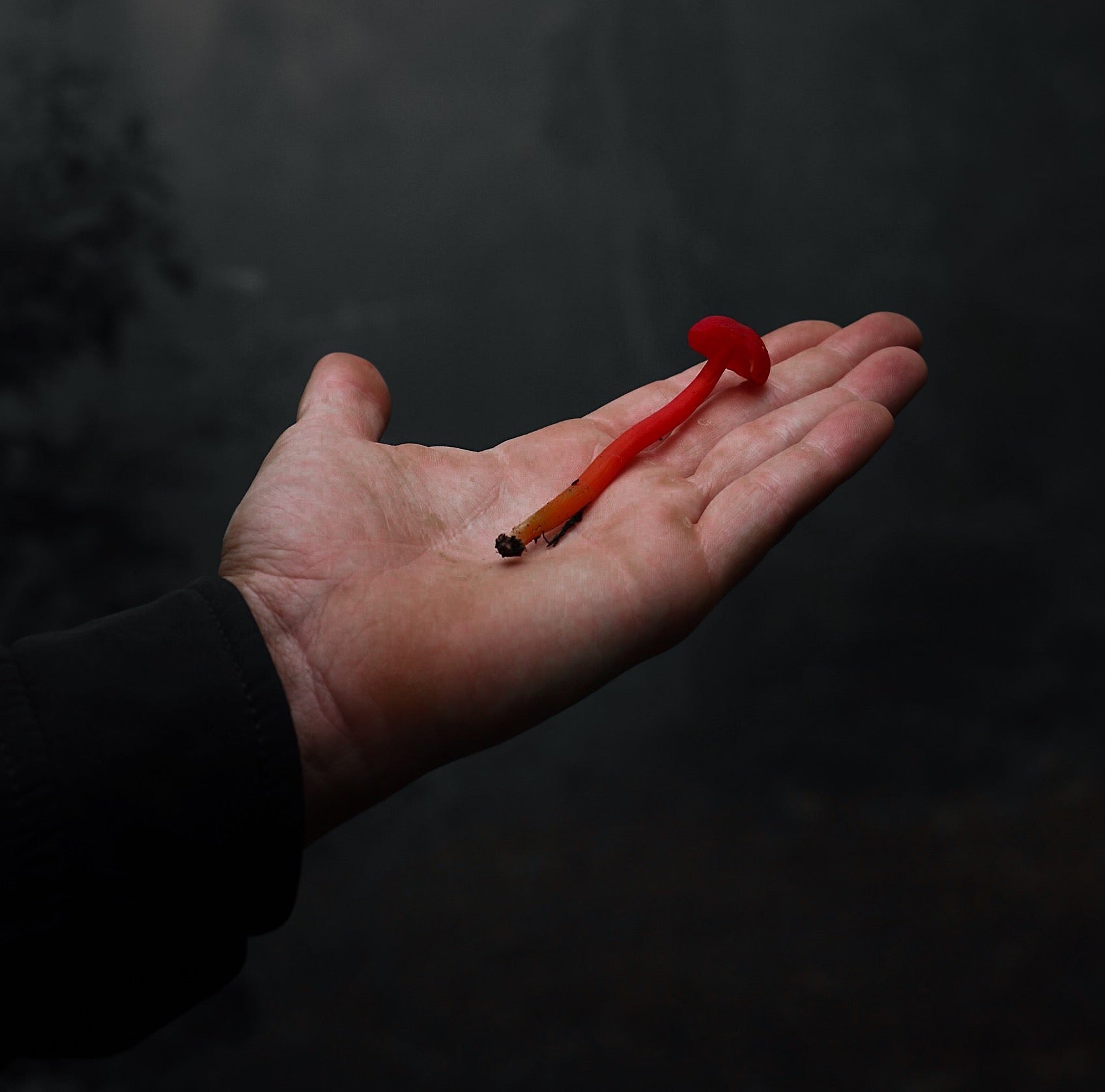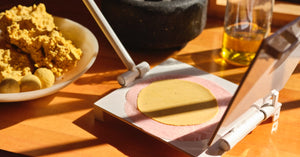The Universe Beneath the Forest Floor: Oaxaca's Mushrooms and Their Stewards
The Universe Beneath the Forest Floor: Oaxaca's Mushrooms and Their Stewards

November 3, 2022
Photos by Iris Reis
From within tree barks and leafy forest floors sprouts a way of life, gastronomically and spiritually, in Oaxaca, Mexico. Famous for its mushroom festivals, cuisines, psychedelic fungi, and their priestess María Sabina (who called them her niños santos, or saintly children), this state in the Mixtec region is where mushrooms of all kinds flourish with deep reverence from those who live amongst them. This state, residing in the Mixtec region, has grown nearly synonymous with mushrooms and is home to over 200 varieties of fungi fruit. It’s the region’s high mountainous altitudes with lush forests surrounding the city of Oaxaca that produce edible, psychedelic, and poisonous fungi alike when the rains spill from May to September, creating the optimal misty and humid climate for fruiting bodies to sprout from beneath the earth.

Mushrooms hold a special place in Oaxacan culture. Thalia Barrios García, chef of Levadura de Olla, who hails from La Sierra Sur has known them since she was a child. Barrios underscores their importance, “edible mushrooms nourish you, psychedelic mushrooms heal and guide you.” For her restaurant Barrios curates menus using local and seasonal ingredients, like mushrooms, preparing them with traditional recipes.
Osvaldo Sandoval, a mushroom researcher and Fiesta de los Hongos festival organizer in Oaxaca, also grew up with mushrooms, collecting fungi in his grandmother’s arms during the rainy seasons. The union of fungi and fungivore in Mexico is a legacy that runs deep, Sandoval says. “In México before the coming of the Spaniards in the 16th century, mushrooms had a greatly revered sacred and ceremonial significance, as has been recorded in linguistic and archeological evidence, and documented in codexes and colonial texts.”
But during colonization, the Spaniards realized psilocybin mushrooms––key to spiritual connection––threatened religious colonization and banned their use, like so many ceremonial plants and practices. But by pure luck, write Sexto Collectivo for Hoja Santa, the Mixtecas were able to conserve a rich and abundant tradition around the consumption of mushrooms––known as o ji’i in Mixteca.
For a lot of the women who harvest and work with mushrooms, the tradition remains oral, and their knowledge and recipes are passed down generationally.

Oaxacan foragers Lázaro Sandoval Alvarado and Estebania Alavez Bautista.
At Cocina de Humo, sister restaurant to Levadura de Olla, Barrios embraces this tradition. She treats guests as if they were entering her home, designing an experience that centers Oaxacan customs and oral histories around dishes and ingredients from her hometown of San Mateo Yucutindoó.
Barrios, who sees mushrooms to be synonymous to family because they crop up in broods, also continues the lineage showcasing fungi in its traditional culinary context. “In the kitchen there’s a lot of room for creativity, but with the mushroom boom, I don’t want to lose the cultural traditions that already surround them,” she says. “People tend to research which are edible, but not how they’re cooked traditionally.”
Amanita mushrooms, also known as hongo de yema (yolk mushroom), are made into yellow mole, she explains. Hongos de leche, milk mushrooms, are found under leaves in forest floors and taste like the forest. With a chile and onion saute, hongos de leche make for delicious tacos that taste like fried pork. Hongos de llano, what she says are wild button mushrooms, make for a mole cenizado (ashed) that uses charred chiles for its ashy color. They’re also cooked in stews, soups, grilled, ‘a la Mexicana’, and even raw, Sandoval adds.
Mushrooms and maíz form a natural pair, and are nestled in fresh masa for tamales, tetelas, tlacoyos, tacos, and on tlayudas. In soups like chileatole, where masa plays a starring role, mushrooms can be present too, bringing together the flavors of the milpa—from the tip of the corn stalk to the floor of the earth. Masa in its many different forms, is the most versatile vehicle traditionally used to enjoy the flesh of Mexico’s fungal catalog. In fact, they are so entwined that when maíz seeds take hold in the earth, mycelium already tingles with life in the soil. It only takes the right cocktail of rain and humidity for fungi to travel up the stalk and erupt in charcoal color out of the corn’s ears as little precious nubs known as huitlacoche, a prized fungus known as Mexican truffle.

And not only do they taste incredible, but Sandoval says, they can also be our greatest teachers. “As human beings [we can learn] resistance, the ability to share, to be in community with plants and animals, and from the great role they play in maintaining the ecosystems.”
Barrios and her team visit the forest every eight days to forage, “because the forest always surprises you,” she says. And in the communal Oaxacan lands, whose rich Indigenuos Mixteca and Zapoteca culture work to preserve the forests with respect and discipline, there’s a process involved. In San Antonio Cuajimoloyas of the Sierra Norte, for example, Barrios says you pay a fee and trek through the forest with an expert guide. Essentially, she says, you ask for permission to visit the forest.

It’s important to forage and walk the forests responsibly, and in good spirits so that the forest will be welcoming to you. This is especially important in seasons when certain foods become trendy, “it’s always about prioritizing the land first,” she says. Even when it means searching the forest floor for four hours to only harvest twelve mushrooms, as has happened to Barrios, which she says is just part of showing the forest respect.
Before collecting your first mushroom, you must tend to the forest first. You have to ensure there’s enough fungi for the animals, like sponge mushrooms, which she says are the bird’s favorite. You bury mushrooms in the soil and cover them with leaves to feed the forest floor, and you must spread their spores.
“It’s on us,” she says, “we have to ensure that there will be mushrooms for many many years to come, just like there’s always been.”
We partnered with our friends at Smallhold, growers of the very best organic mushrooms, to bring this story to life. Check out their newsletter and give them a follow on Instagram.


